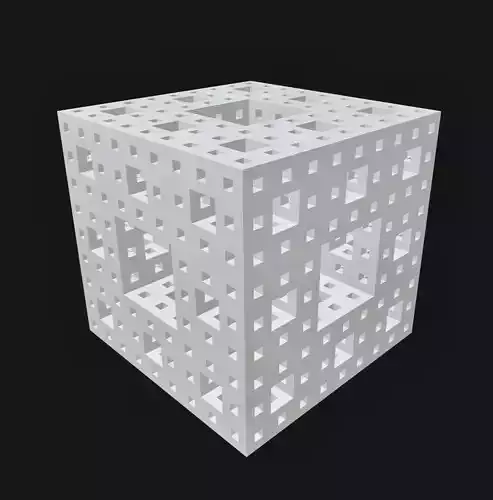Geometry Details
Vertices: 288,000Triangles: 96,000Vertex Index Range: [Start: 0, Count: 288,000]
The Menger Sponge bridges pure mathematics and applied design. First conceived by Karl Menger as a topological curiosity, it has since become an icon of fractal geometry, representing the elegance of infinity within finite space. This 3D model with 288k vertices and 96k triangles captures a finite iteration of this infinite for balancing mathematical beauty with computational precision.
The 5 Ws of the Menger Sponge (History & Math)
Who
- Named after Karl Menger (1902–1985), an Austrian-American mathematician.
- He introduced the sponge in 1926 while studying topological and geometric properties of higher-dimensional spaces.
What
- The Menger Sponge is a three-dimensional fractal curve (a 3D generalization of the Cantor set).
- It is constructed recursively: starting with a cube, repeatedly subdividing into 27 smaller cubes, and removing the central cube and the 6 cubes touching the centers of each face.
- The result is a structure with infinite surface area but zero volume as iterations go to infinity.
When
- First formally described in 1926, during the rise of fractal and set-theory investigations in the early 20th century.
Where
- Studied in the field of mathematics (topology, fractal geometry, measure theory).
- Today, it appears in computer graphics, architecture, and art, as well as mathematical modeling.
Why
- The Menger Sponge illustrates paradoxical properties
- Zero volume, infinite surface area.
- Demonstrates how self-similarity and recursion work in fractal geometry.
- It is used as a teaching tool for dimensions, infinity, and fractal mathematics, as well as a practical challenge for 3D modeling and algorithmic design.






